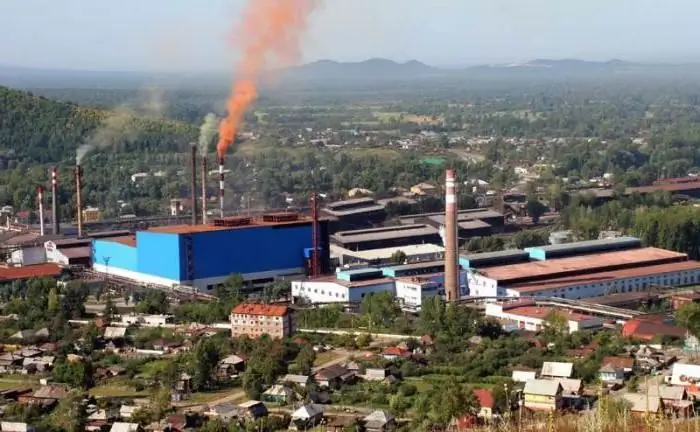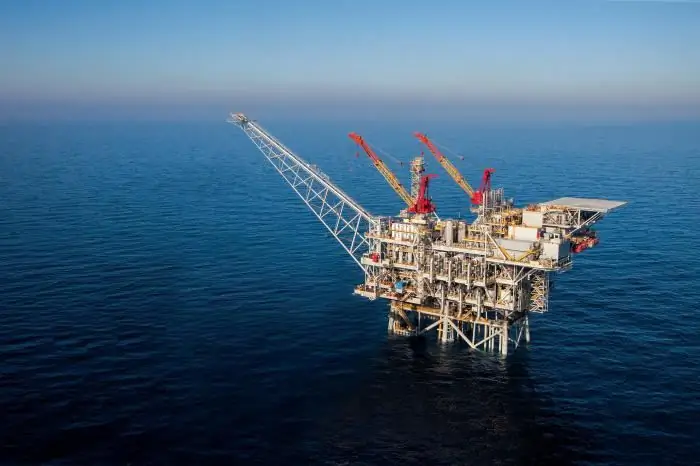2025 Author: Howard Calhoun | [email protected]. Last modified: 2025-01-24 13:10:26
JSC Chelyabinsk Zinc Plant is the largest zinc producer in the Russian Federation. Its share in the domestic market is about 62%. In 2016, control over the company's shares passed to the Ural Mining and Metallurgical Company.
Description
ChZP is a vertically oriented production, which implies a full cycle of production of non-ferrous metals - from the extraction and processing of ore raw materials to the production of finished products. The plant is equipped with modern equipment (the best in Europe), which makes it possible to produce the highest quality refined zinc with a purity of 99.995%.

On the London Stock Exchange, this metal is sold under its own brand Chelyabinsk zinc plant Special High Grade. In Russia, over half of refined zinc and its alloys is produced by the Chelyabinsk Zinc Plant. Address: 454008, Chelyabinsk region, city of Chelyabinsk, Sverdlovsky tract, 24.
Building an enterprise
In the early 1930s, the Soviet government launched a large-scale industrialization program for the Urals. ATChelyabinsk planned to build more than a dozen industries. One of the priority projects was the construction of a zinc smelting plant. In the autumn of 1930, the laying of the foundations of the plant management, workshops, locomotive and fire stations took place. Construction was hard. There was a lack of funding, sensible personnel, builders. Contractors violated the deadlines for deliveries. Only the intervention of the People's Commissar of the USSR Sergo Ordzhonikidze made it possible to speed up the construction of the plant.

The enterprise, called the Chelyabinsk Electrolytic Zinc Plant, was launched only 5 years later (1935-14-07), although it was originally planned to be put into operation in October 1932.
Workdays
The role of the enterprise increased significantly during the Second World War. Zinc and its derivatives were used to make ammunition. Most of the male team was mobilized, in the shops mostly women worked. CZP exceeded its plans on a quarterly basis. Many factory workers are marked with state regalia.
The post-war building boom demanded more and more galvanized metal structures. The Chelyabinsk Zinc Plant expanded its production base while improving the quality of raw materials and productivity. A general reconstruction took place in the mid-1950s. Equipment has been updated, working conditions and environmental conditions have improved. In the 60s, the capacities were increased to 70,000 tons annually. The second large-scale reconstruction was carried out in the late 80s. After the collapse of the USSR, the enterprise wascorporatized.
Products
The Chelyabinsk Zinc Plant produces the highest quality metal under the brand name “Extra High Quality Zinc” (SHG), which is confirmed by the London Stock Exchange certificate. Alloys and rare metals occupy a significant share in the volume of production.

Assortment consists of:
- refined zinc with a minimum content of impurities (99, 995%);
- zinc-nickel-aluminum alloy;
- zinc sulfate;
- zinc-aluminum alloy;
- cast zinc alloy grade TsAM 4-1;
- cadmium;
- india metal;
- sulfuric acid.
Partners
Chelyabinsk Zinc Plant is one of the few suppliers of non-ferrous and rare earth metals on the Russian market. The largest consumer of zinc is ferrous metallurgy, which uses the metal in the production of galvanized steel. In particular, the main buyers of CZP products are the Magnitogorsk Iron and Steel Works, a joint venture between Severstal and Arcelor for the production of galvanizing, as well as the Novolipetsk Iron and Steel Works and the Kashirsky coated steel plant. These companies account for over 90% of sales.
Part of the production is consumed by enterprises that produce rolled products from brass and bronze alloys. Among them are the Kirov, Moscow, Revdinsky and Kolchuginsky non-ferrous metal processing plants. A significant share of CZP's products has been exported in recent years. Demand for zinc is expected to continue to grow in Russia, especially fromconstruction segment, in connection with which metallurgists have stepped up their projects for the production of galvanized steel.
Development
Chelyabinsk Zinc Plant is constantly being upgraded. In 2006-2009 alone, investments in production development exceeded $70 million. CZP implemented a project to build Waelz Furnace No. 5. The new furnace made it possible to process secondary materials containing zinc. This reduced the company's dependence on zinc concentrate suppliers and increased its production by 25,000-30,000 tons of zinc annually.

In 2011, the Chelyabinsk plant produced 160,000 tons of metallic zinc and its alloys (about 63% of Russian production). In 2016 - already 174803 tons of commercial SHG-quality zinc. Net profit amounted to more than 4 billion rubles. In 2015, CZP smelted a jubilee 8 million tons of valuable metal over the entire period of operation.
Competitive advantages
CZP has the following competitive advantages:
- This is the leader in terms of zinc production and revenue from its sale in the Russian Federation. The share of metal produced under the SHG brand is about 96% in the Russian Federation.
- The company has established long-term relationships with major customers, mainly in the Russian steel industry.
- The plant produces a wide range of highly profitable zinc alloys based on the SHG grade, which has special properties due to its high purity.

To reduce operating costs, CZP has invested in modern technology and implemented cost control measures at its production facilities. For example, in 2005 the plant was able to process approximately 24,000 tons of secondary and lower quality materials, which is 300 more than in 2000. In addition, since production is located in the Russian Federation, CZP also has access to lower wage labor, cheaper electricity and transport than some of its international competitors.
Chelyabinsk zinc plant: contacts
The enterprise has a developed administrative structure that allows maintaining old and establishing new connections. The personnel policy is aimed at rejuvenating the workforce. The company's phone numbers can be found on its official website.
Recommended:
Chelyabinsk Metallurgical Plant: history, address, products, management

Chelyabinsk Metallurgical Plant is one of the largest enterprises in the industry, since 2001 it has been part of Mechel OJSC. The laying of the enterprise took place in the 30s, the construction was completed during the Great Patriotic War
Metal structures plant, Chelyabinsk: history of creation, address, working conditions and manufactured products

The Chelyabinsk steel structure plant is one of the industry leaders in the production of structures for industrial and civil construction, as well as bridges. The range and quality of products made the company in demand in Russia and abroad
JSC "Ashinsky Metallurgical Plant": history, production, products

JSC "Ashinsky Metallurgical Plant" is a city-forming enterprise in the west of the Chelyabinsk region. AMZ is one of the top five Russian suppliers of thick plates, nanocrystalline and amorphous alloys. Leader in the production of tableware, household items and garden tools from stainless steel
Modern production. The structure of modern production. Problems of modern production

Developed industry and a high level of the country's economy are key factors influencing the we alth and well-being of its population. Such a state has great economic opportunities and potential. A significant component of the economy of many countries is the production
Gas production. Gas production methods. Gas production in Russia

Natural gas is formed by mixing various gases in the earth's crust. In most cases, the depth of occurrence ranges from several hundred meters to a couple of kilometers. It is worth noting that gas can form at high temperatures and pressures. In this case, there is no access of oxygen to the place. To date, gas production has been implemented in several ways, each of which we will consider in this article. But let's talk about everything in order

